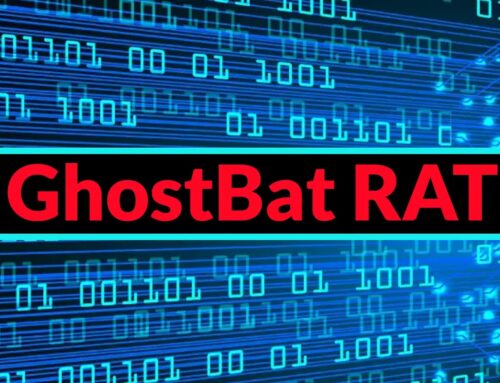
Threats Actors Poisoned Bing Search Results to Deliver Bumblebee Malware if User Searched for ‘ManageEngine OpManager’
The Silent Compromise: How Bing Search Became a Delivery Vector for Bumblebee Malware
Imagine searching for critical IT management software to secure your infrastructure, only to inadvertently download malicious code that paves the way for ransomware. This unsettling scenario recently played out as cybersecurity researchers uncovered a sophisticated SEO poisoning campaign leveraging Bing search results to distribute the insidious Bumblebee malware. This campaign, ultimately culminating in devastating Akira ransomware attacks, highlights an evolving tactic by threat actors: weaponizing trusted search platforms to compromise unsuspecting users.
Understanding the SEO Poisoning Campaign
The campaign, observed actively throughout July 2025, meticulously targeted users specifically searching for ‘ManageEngine OpManager’ – a legitimate and widely used IT management solution. Threat actors manipulated search engine results pages (SERPs) to display malicious links prominently, often disguised as official download sources or helpful resources. When users clicked these poisoned links, they initiated the download of the Bumblebee malware.
SEO poisoning campaigns exploit the very mechanisms designed to help users find information. By optimizing malicious websites to rank highly for specific search terms, attackers trick users into visiting compromised sites that then deliver their payloads. In this instance, the success lay in targeting a specific, high-intent search query, indicating a calculated effort to ensnare IT professionals or system administrators who would likely have elevated network privileges.
Bumblebee Malware: A Precursor to Ransomware
Bumblebee, initially identified as a loader, is far more than a simple downloader. It possesses sophisticated capabilities, including stealthy execution, evasion techniques, and the ability to download and execute additional payloads. Its primary role in this campaign was to establish a foothold within the compromised network, serving as a critical precursor to the deployment of Akira ransomware.
The progression from
Bumblebee infection to Akira ransomware signifies a multi-stage attack methodology. Bumblebee’s ability to create persistence and facilitate lateral movement within a network makes it an ideal initial compromise tool, allowing attackers to escalate privileges and prepare for the final, destructive ransomware payload.
The Akira Ransomware Connection
Akira ransomware is a formidable threat known for its aggressive encryption capabilities and double-extortion tactics, where not only are files encrypted, but sensitive data is also exfiltrated for potential leakage if a ransom is not paid. The link between Bumblebee and Akira in this campaign underscores the coordinated nature of modern cyberattacks, where specialized malware components work in concert to achieve maximum impact. The financial and operational fallout from an Akira ransomware attack can be catastrophic for organizations.
Why Bing?
While Google often dominates discussions around SEO, Bing remains a significant search engine, particularly within enterprise environments where it is often the default search provider for many corporate browsers. Threat actors’ choice to target Bing in this campaign demonstrates their awareness of diverse user bases and their willingness to exploit less scrutinized, though still widely used, platforms for malware distribution. This serves as a critical reminder that cybersecurity vigilance must extend beyond the most popular services.
Remediation Actions and Prevention
Mitigating the risk of such sophisticated SEO poisoning and subsequent malware attacks requires a multi-layered approach encompassing technical controls, user education, and proactive monitoring.
- Verify Download Sources: Always download software directly from the official vendor’s website. If a search result leads to a different domain, exercise extreme caution.
- Implement Robust Endpoint Detection and Response (EDR): EDR solutions can detect and prevent the execution of malicious payloads like Bumblebee by monitoring system behavior and identifying suspicious activity.
- Regular Software Patching: Ensure all operating systems and applications, especially IT management software like ManageEngine OpManager, are patched regularly to close known vulnerabilities.
- User Awareness Training: Educate users about the dangers of clicking suspicious links, even those appearing in search results. Emphasize the importance of verifying URLs before clicking.
- Network Segmentation: Limit the blast radius of a potential breach by segmenting your network, restricting lateral movement for attackers who gain an initial foothold.
- Web Application Firewalls (WAF) and Content Filtering: Deploy WAFs to detect and block malicious traffic, and implement content filtering to prevent access to known malicious domains.
- Adherence to Least Privilege Principle: Ensure users, especially those involved in IT administration, operate with the minimum necessary privileges to perform their duties.
- Regular Data Backups: Implement a robust, tested backup strategy for all critical data. Ensure backups are stored offline and are immutable to protect against ransomware encryption.
Relevant Tools for Detection and Mitigation
| Tool Name | Purpose | Link |
|---|---|---|
| Endpoint Detection and Response (EDR) Solutions | Real-time threat detection, prevention, and response on endpoints. | Gartner Peer Insights (for vendor selection) |
| VirusTotal | Analyze suspicious files and URLs for malware. | https://www.virustotal.com/ |
| Managed Detection and Response (MDR) Services | Outsourced security operations center for 24/7 threat monitoring and response. | Gartner Peer Insights (for vendor selection) |
| URL Reputation Services | Check the reputation of URLs before clicking. | Google Safe Browsing |
Key Takeaways
The Bing SEO poisoning campaign delivering Bumblebee malware leading to Akira ransomware serves as a stark reminder: even trusted platforms can be weaponized. Threat actors meticulously plan their attacks, targeting specific user profiles and leveraging sophisticated distribution methods. Organizations must move beyond basic security measures and embrace a proactive, multi-layered defense strategy that includes advanced endpoint protection, robust backup solutions, and continuous security awareness training for all personnel. Vigilance at every step, from a simple search query to software installation, is paramount in safeguarding against the evolving threat landscape.





